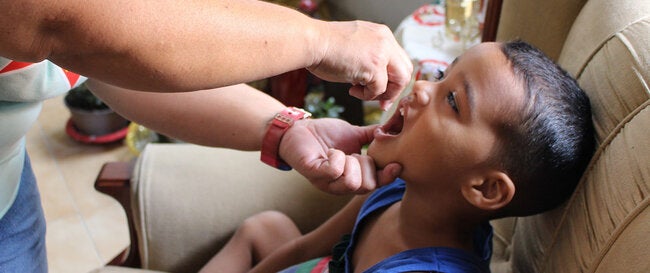Source: https://www.thetimes.co.uk/edition/w...ears-vm9vbm38x
Venezuela suffers its first outbreak of polio in 30 years
Stephen Gibbs, Caracas
June 9 2018, 12:01am, The Times
A crisis in the healthcare system means that some people have not been vaccinated since 2016
Polio is suspected to have broken out in Venezuela, 24 years after the Americas were declared free of the disease.
The Venezuelan Society of Public Health, a non-governmental doctors? association, said that three suspected cases were detected among an indigenous population in the remote northeastern state of Delta Amacuro, where the Orinoco River delta is located...
Venezuela suffers its first outbreak of polio in 30 years
Stephen Gibbs, Caracas
June 9 2018, 12:01am, The Times
A crisis in the healthcare system means that some people have not been vaccinated since 2016
Polio is suspected to have broken out in Venezuela, 24 years after the Americas were declared free of the disease.
The Venezuelan Society of Public Health, a non-governmental doctors? association, said that three suspected cases were detected among an indigenous population in the remote northeastern state of Delta Amacuro, where the Orinoco River delta is located...

Comment